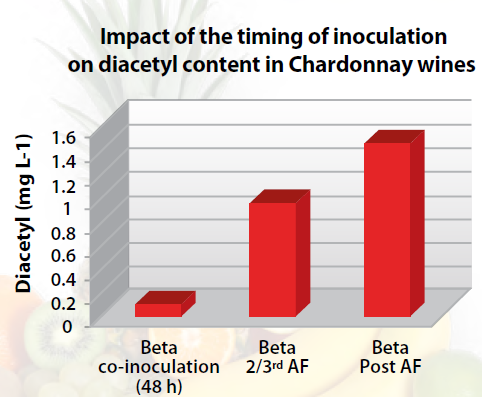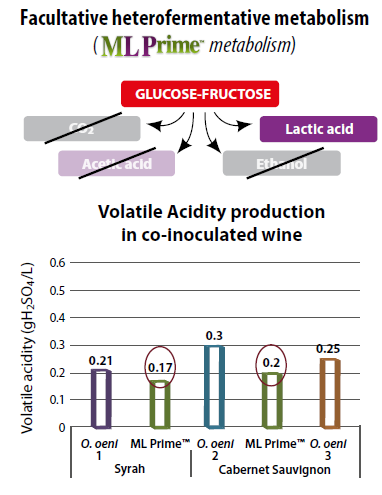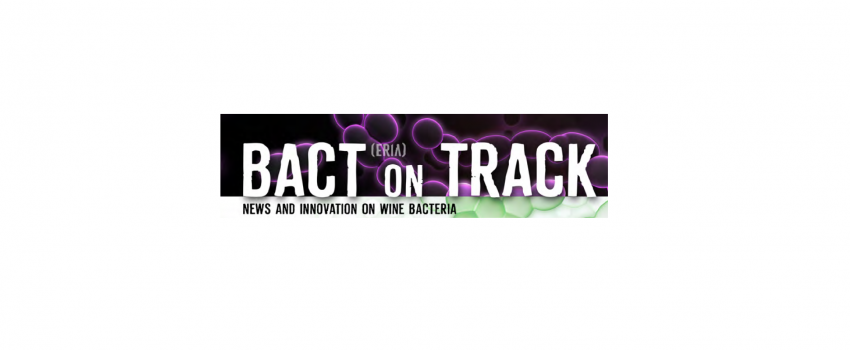
Co-inoculation : benefits for malolactic fermentation
Publiée le 02/11/2017 17:09Co-inoculation is now recognized as a simple and safe practice for the management of malolactic fermentation for wine quality optimization.
Co-inoculation is the practice of inoculating selected wine bacteria at the beginning of the winemaking process shortly after yeast inoculation, usually 24 to 48 hours after yeast inoculation. This technique is advantageous because not only will it secure the malolactic fermentation (MLF), but also because there are definite advantages that are recognized by winemakers and professionals. For a successful co-inoculation, some parameters are crucial for its success – choosing the right wine yeast, correctly rehydrated, good temperature management and the proper yeast nutrition strategy are keys point to integrate for any fermentations. Well-fed and healthy wine yeast and bacteria leads to complete and regular alcoholic and malolactic fermentations Based on 20 years of experiences, and from the results of many collaborations between Lallemand and research center from France, Spain, Italie, South Africa, Argentina and Germany has shown the benefits of co-inoculation with either Oenococcus oeni or Lactobacillus plantarum.
Co-inoculation to produce fresh wines styles with low diacetyl content
Co-inoculation has a stronger impact on diacetyl production compared to the type of wine bacteria used. Our studies with institutes such as Neustadt and IFV and many winery trials have shown that whatever the wine bacteria used (and even with highest producer of diacetyl), co-inoculation always result in more fruit-driven wines styles and very low diacetyl content in wines. Early results also show that in the case of co-inoculation the high content of sugars could repress the metabolism of the diacetyl, as opposed in post-alcoholic fermentation inoculation. And under the reductive conditions generate by the active yeast, diacetyl produced will be immediately reduced to the less active metabolites, acetoin and butanediol.
Impact of different malolactic fermentation inoculation scenarios on Riesling wine aroma
Knoll et al. World J Microbiol Biotechnol (2012) 28:1143–1153
Using malolactic fermentation to modulate wine style
AWRI November 2015
Fast and reliable Malolactic Fermentation (MLF)
MLF can be completed in between 3 days to 2 weeks depending on the type of musts and the bacteria used.
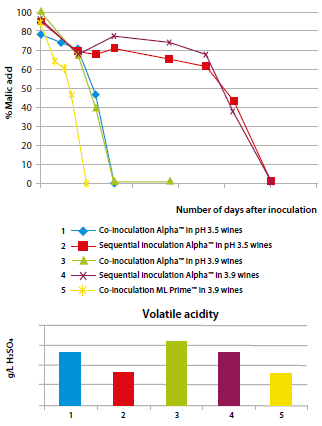
Malolactic Fermentation Induced by Lactobacillus plantarum in Malbec Wines from Argentina
Lerena et al. S. Afr. J. Enol. Vitic., Vol. 37, No. 2, 2016
Guzzon et al. S. Afr. J. Enol. Vitic., Vol. 37, No. 2, 2016
Co-inoculation to limit the development of Brettanomyces and off-flavors
The increase in sugar levels, pH and sometimes lower SO2 addition can influence the development of spoilage microorganisms, especially Brettanomyces which can produce phenolic off-odors in wines.
It is well known that the period from the end of AF to the start of MLF is particularly conducive to the development of Brettanomyces.
Early inoculation with wine bacteria, either right after AF or in co-inoculation (24 hours after inoculation with yeast), has proven to be a simple and effective method for preventing the development of Brettanomyces and the production of ethyl phenols off-flavors. Our recent studies with IFV in Burgundy (Gerbaux) show that co-inoculation with our selected bacteria inhibit the growth of Brettanomyces (below 10 cell/mL) as opposed to the spontaneous control which is still contaminated with 500 cell/mL of Brettanomyces while the MLF is not completed and the wine is not stabilized.
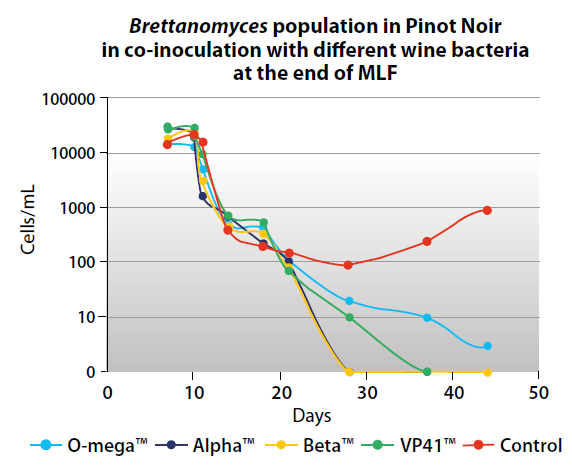
Influence of Inoculation with Malolactic Bacteria on Volatile Phenols in Wines
Gerbaux et al. 2009 Am. J. Enol. Vitic. 60:2
Co-inoculation : Oenococcus oeni or Lactobacillus plantarum (ML Prime™)
Co-inoculation is recognized as a secure and safe practice with our Oenococcus oeni cultures (VP41™, BETA™, ALPHA™, PN4™, OMEGA™,...) for the different wines conditions.
As a bio-control agent for low acidity /high pH wines, ML Prime™ Lactobacillus plantarum is ideal as it completes MLF in 3-5 days during the AF with no risk of increased VA due to its specific metabolism. It enables early stabilization of wines , as soon as the AF is finished.


